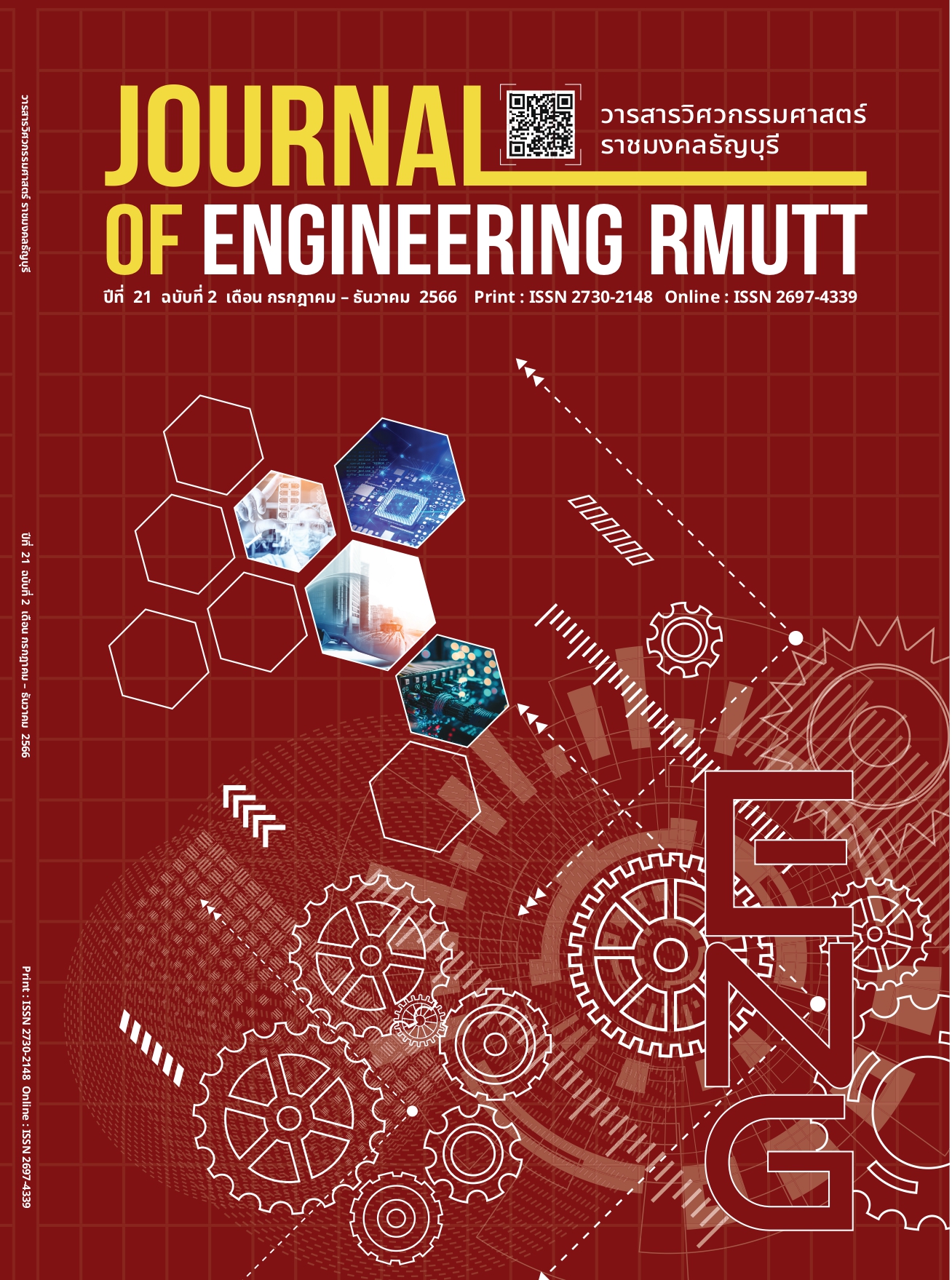Design of Propulsion Power and Test of Stopping Systems of a Prototype Train
Main Article Content
Abstract
The purpose of this article is to study the propulsion power and stopping systems of a prototype train using a push-pull motor linear actuator. The prototype train is controlled by an Arduino microcontroller board and runs on a 0.459-meter-wide track with a total of 3 simulated stations totaling a distance of 100 meters. Each station has a distance of 50 meters. The test of the stopping systems of the train is divided into 2 parts: 1. Changing the train speed: There are three speeds, including 2.7, 3.9, and 4.5 kilometers per hour. 2. The change in weight of the train has three values: 360, 420, and 480 kilograms. The experimental results found that the appropriate speed and weight of the prototype train that causes the train to stop closest to the station is 3.9 kilometers per hour and the train's weight is 480 kilograms. Furthermore, there is an average stopping distance for the outbound and return trips of -3.0 and -3.2 centimeters (stopping before reaching the station), respectively.
Article Details

This work is licensed under a Creative Commons Attribution-NonCommercial-NoDerivatives 4.0 International License.
The manuscript, information, content, picture and so forth which were published on Frontiers in engineering innovation research has been a copyright of this journal only. There is not allow anyone or any organize to duplicate all content or some document for unethical publication.
References
Office of the National Economic and Social Development Council. Report on national development results in the past 5 years (2014–2018) [Internet]. 2019 [cited 2022 Dec 16] Available from: https://www.nesdc.go.th/Ewt_news.php?nid=8636&filename=index
Office of the Secretariat of the House of Representatives Parliamentary Budget Office. Guidelines for developing the country's transportation system. Bangkok: Publishing House Office of the Secretariat of the House of Representatives [Internet]. 2019[cited 2022 Dec 19] Available from:https://www.parliament.go.th/ewtadmin/ewt/parbudget/ewt_dl_link.php?nid=680
Wikipedia. Railway [Internet]. 2022. [cited 2022 Dec 16], Available from: https://th.m.wikipedia.org/wiki/train
Paknam536. Driving through a railway intersection correctly [Internet]. 2022.[cited 2022 Dec 16], Available from: https://www.autospinn.com/2020/10/driving-ips-drive-across-railway-80667
Saisanit T, Kotchaphong W. A case study of the BTS electric train braking system of bangkok mass transit system public company limited. Thesis of Engineering. Siam University. 2013. (In Thai)
Chantson N. Railway mechanic. Pathumthani: NSTDA; 2017.
Kerdkub P, Simma T, Kittiratsatcha S. Regenerative braking control system for trains driven by electric machines. Type of relugdance switch. The 3rd Conference on Thailand Rapid Transit System Academic, Bangkok, Thailand. Sep 1-2, 2015: TRAS2015. (In Thai)
Lu, Shaofeng, Weston, Paul, Hillmansen, Stuart, Beng Gooi, Hoay, Roberts, Clive. Increasing the regenerative braking energy for railway vehicles. IEEE Transactions on Intelligent Transportation Systems. 2015; 15(6):2506-15.
Foiadelli F, Roscia M, Zaninelli D. Optimization of storage devices for regenerative braking energy in subway systems. IEEE Power Engineering Society General Meeting. 2006:1-6.
Okada Yuruki, Koseki Takafumi, Sone Satoru. Energy management for regenerative brakes on a DC feeding system.In The Proceedings of International Symposium on Seed-up and Service Technology for Railway and Maglev Systems STECH. 2003.
Nathaphan S. and Suwantaroj K. A study of useage influence affecting tyre rolling coefficien (research report) Bangkok: Faculty of Engineering Rajamangala University of Technology Phra Nakhon. (2020). (In Thai)
Suwanprathip T. Automotive Engineering. Bangkok: Wittayapat. 2009. (In Thai)
ORIENTAL MOTOR (THAILAND) CO., LTD. Calculation of motor selection. [Internet]. 2023. [cited 2022 Dec 16], Available from: https://www.orientalmotor.co.th/om/technical/general/motor-sizing-calculations.html.
Afrilcate.Coefficient of Rolling Friction (Fully Explained). [Internet]. 2022. [cited 2022 Dec 16], Available from: http://afrilcate.com/coefficient-of-olling-friction/
The Engineering ToolBox. Drag Coefficient. [Internet]. 2022. [cited 2022 Dec 16], Available from: https://www.engineeringtoolbox.com/drag-oefficient-d_627.


